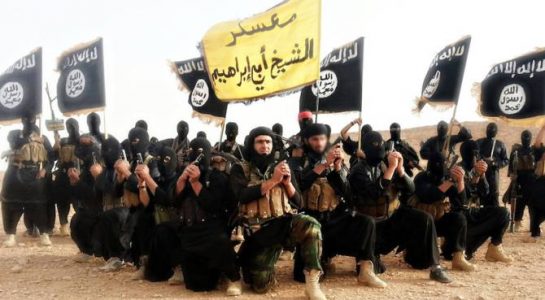
Islamic State’s reappearance puts fragility of Iraq and Syria in focus
An uptick in attacks in Iraq by suspected Daesh militants since the beginning of this year is stoking fears that the militant outfit is regrouping and could again threaten the country’s stability.
On May 28, Daesh spokesperson Abu Hamza Al-Qurayshi released a recording on the messaging app Telegram, saying that the terror group’s fighters will “start to increase their attacks against the Crusaders since the US has withdrawn from Iraq.”
“Greater punishment against Crusaders is coming once the caliphate achieves the victory and is established once again,” Al-Qurayshi said, according to the Iraqi Kurdish news agency Rudaw.
Earlier in May, hundreds of acres of wheat and barley cropland in Iraq’s disputed Kirkuk province went up in flames.
Daesh claimed responsibility for some of the fires. Around the same time, it released a propaganda video vowing to free fellow members from Iraqi jails.
Since 2017, Daesh has taken advantage of security gaps in disputed regions between Iraq and the autonomous Kurdistan region, terrorizing and extorting locals, and mounting hit-and-run attacks against Iraqi and Kurdish forces.
Citing the US Central Command, the most recent Pentagon Inspector General report, which covers the period from Jan. 1 to March 31, warned that Daesh is “regrouping and reforming” in the mountains of Makhmur in northern Iraq, which is inside the disputed territories between Iraq and the Kurdistan region.
According to the report, the US also expects Daesh “to seek to re-establish governance in northern and western areas of Iraq.”
On May 17 the Iraqi military launched an operation to force Daesh out of its sanctuaries. However, if past efforts of this kind are any indication, it is unlikely to inflict long-lasting damage on the group.
Since 2017, Daesh has reverted to the role of lethal non-state actor — as it was before it conquered one-third of northern Iraq in June 2014 and declared the establishment of a “caliphate.”
“Daesh has posed a threat to Iraq, in its various forms, since 2003 and will continue to do so for the foreseeable future,” Michael Knights, a military and security affairs specialist at the Washington Institute for Near East Policy, told Arab News.
“It is now part of the Iraqi landscape, like a resilient weed or virus.”
Knights and Alex Almeida, who monitor Daesh’s activities, have detected a 13 percent increase in the militants’ attacks in Iraq this year over the previous year — at least 566 in the first three months of 2020, compared with 1,669 during the entire 2019.
According to Knights, Daesh is again using strategies that worked in the past, including jailbreaks and extorting farmers by threatening to burn their crops.
“In terms of attack metrics, Daesh is back to 2012 levels, but is still only a third of 2013 levels, and it will take more than a year of growth at the current rate to reach 2013 levels of attacks,” he said.
“Also, the insurgency is different at a qualitative level. Today’s Daesh is not really present in the cities, and so far they have turned away from mass-casualty attacks on civilians.”
Nevertheless, the group still poses a threat after transferring its strength from Syria back into Iraq over the past 12-18 months.
Source: Arab News





